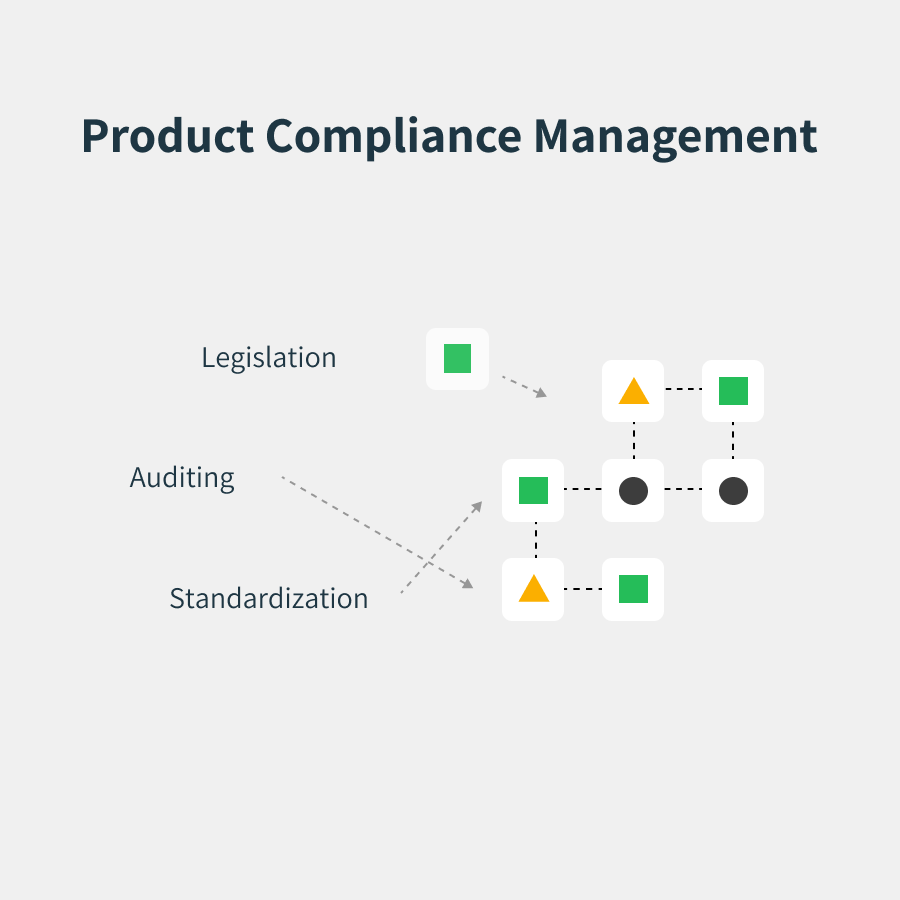With a product portfolio of several thousand SKUs, it can be difficult to get an overview of whether all products comply with applicable rules and regulations—that is, whether the company’s product compliance is under control. Similarly, it can be overwhelming to keep track of whether all legally required product information is present so that the products can be declared ready for sale—that is, whether the documentation for product compliance is properly managed.

Why is Product Compliance Management important?
Compliance is tricky. And important. In fact, it’s “mission critical,” as we say in good Danish.
If you add to that the fact that many products today are manufactured in one part of the world under one set of laws and regulations, only to be sold in multiple markets elsewhere with different laws and rules, the complexity and confusion become nearly complete.
This applies whether you import goods for resale locally or produce goods for export. Products that are legal in one market aren’t necessarily legal in another.
And even if the products are legal, there may be different requirements regarding how the product is used, its packaging, or the documentation accompanying the product.
With thousands of items on the shelves, even simple questions become complex. For example, can you quickly answer these:
- Can this product be sold in the USA?
- Is this product organic-certified or labeled with the EU Ecolabel (the EU Flower)?
- Are there special disposal rules for this product in any EU country?
- What allergens are present in this product?
- Do we have any Fairtrade-certified products on our shelves?
Our experience tells us that very few companies can answer these questions clearly and confidently.
Product Compliance Management as a competitive advantage
One of the points we often emphasize is that companies with the best product data win the market and customers—especially in a reality where at least 80% of consumers conduct online research before making a purchase.
Compliance isn’t just about meeting legal requirements to avoid fines. It’s also about showcasing your products and services.
Meeting a safety standard means your product has likely passed a series of tests—something consumers will likely see as a positive attribute.
Having organic certification or other energy or allergen labels means your product “offers” something special, which users can rely on in their search for information.
Compliance should therefore not only be about meeting legislation to avoid fines and lawsuits.
We believe it’s equally about making customers aware of product data that helps them make informed choices.
When Should You Invest in Product Compliance Management?
Ideally, everyone with a PIM system would invest in Product Compliance Management. Realistically, it’s not a top priority for all companies. This is often because anything that smells like legal matters also smells EXPENSIVE.
If the above challenges sound familiar, and you find that too many internal resources are being used to manage this type of product data —
— then Product Compliance Management is a natural tool for improvement.
Start with a Product Compliance Management audit
A good place to start could be with an audit. Based on one or more workshops, you can map out your data model and your compliance situation (which rules, laws, standards, etc., apply to you?).
At PicoPublish, we specialize in Product Information Management (PIM), and we have extensive experience in handling and structuring the product data needed to ensure your company’s product compliance.
We often see that using PIM as a tool makes Product Compliance Management much easier.
Some concrete benefits we see with our customers working with PIM include:
- A consolidated overview of all available product information
- Easy and efficient maintenance of product information
- Clear overview of internal workflows and approval processes
- Publishing product data across different channels in various markets
